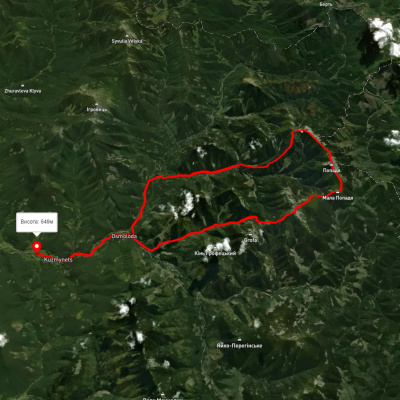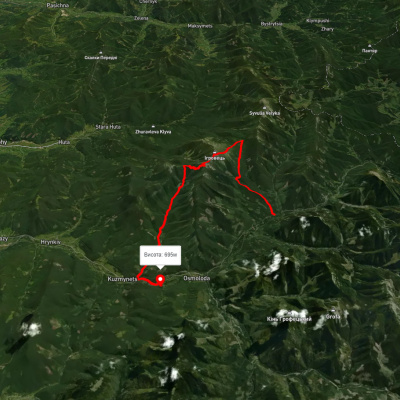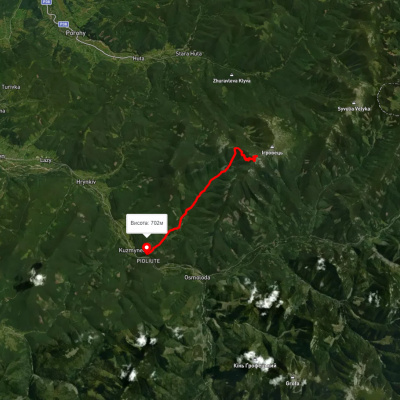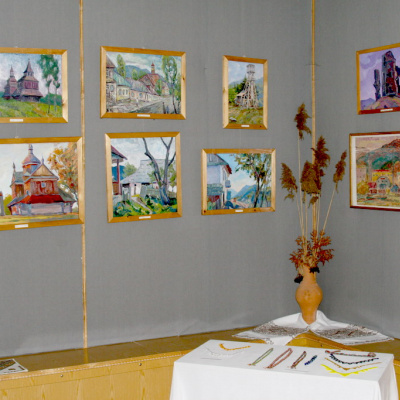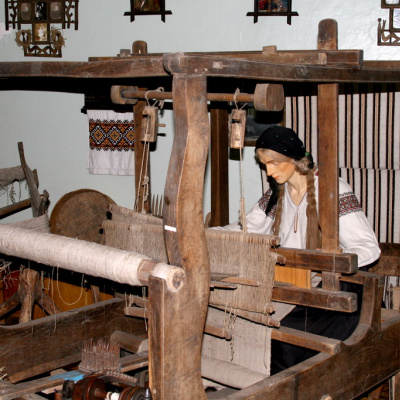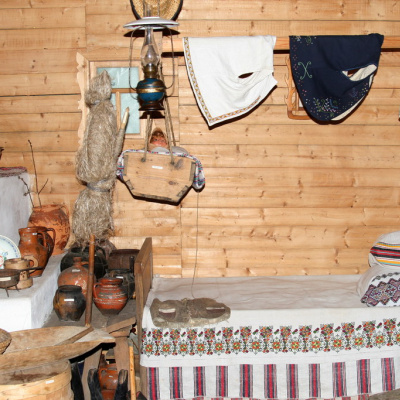Historical and Local Lore Museum of Culture and Life of Boikivshchyna
The Tsinovsk Historical and Local History Museum was opened in 1976. It is located in an old house of the village, which was once called the White School, as this building amazed and delighted everyone with its white color. The school was built by the village community in 1910. The funds for this were allocated by the Glezinger company as compensation to the villagers for the land they gave for the construction of the railway to the Carpathians.
More than five thousand monuments of material and spiritual culture are collected in five halls of the museum. These are documents of history and archeology, numismatic collections, crafts and household items. The museum was awarded the title of national museum.
Hall 1. Here you can find objects and illustrative materials that acquaint visitors with the history of the Rozhniativ region from the second century BC to the third century AD. There are pottery, stone axes, scrapers, and knives on display. The sections "Kyivan Rus," "Galicia-Volyn Principality," and "The Land Under the Yoke of Noble Poland" vividly tell the story of the region. Interesting materials about our history are contained in the sections "Culture and Education" and "Economy of the region in the second half of the XIX - early XX century". The interior of a Boyko house is also presented here.
Room 2. This room contains materials about the First World War, which passed through the district like a black line, about the Sich Riflemen and the formation of the ZUNR. One of the sections of this hall tells about the development of industry and agriculture in the village and district under the conditions of noble Poland and Austria.
There is interesting information about craftsmen. The craftsmen of Tsinov built about 100 wooden churches in Galicia. The names of Thomas Dzhuryn and Yakiv Demkov are listed in the URE. Under their leadership, a monument of folk architecture, the church, which is now on display in the Shevchenkivskyi Hai museum, was moved from the village of Kryvky to Lviv. In 1745, the village builders erected the Church of St. Michael in his native Tsineva.
The collection of photographs from the 20s and 30s is of great interest.
Hall Z. The materials and photographs in this hall recreate the documentary story of the courage and heroism of the residents of Tsenia during the Second World War.
Hall 4. Visitors can see souvenirs and gifts to the museum from Canada, the United States, Vietnam, Hungary, Czechoslovakia, and other countries. There are interesting materials about the village's friendly relations with Romania. The final section of the exposition tells about the activities of the primary organization of the Ukraine Society and cultural ties with Ukrainians abroad.
Hall 5. This is the hall of fauna and flora of the region. The hall displays stuffed animals and birds, photographs of the beauty of the Carpathian region.
Working days: Monday - Friday
Opening hours: from 11:00 to 18:00.
Accommodation around Historical and Local Lore Museum of Culture and Life of Boikivshchyna:
Nearby hiking trails near Historical and Local Lore Museum of Culture and Life of Boikivshchyna:
Які маршрути проходять повз Historical and Local Lore Museum of Culture and Life of Boikivshchyna?
Пропонуємо пройти такі туристичні (пішохідні) маршрути через/біля Historical and Local Lore Museum of Culture and Life of Boikivshchyna: с. Осмолода, через пол. Плісце, г. Коретвина, г. М. Попадя, г. В. Попадя до с. Осмолода, с. Осмолода, через г. Ігровець, г. Висока до с. Осмолода, с. Кузьминець - г. Висока, с. Гута - с. Пасічна, с. Осмолода, через г. Ігровець, г. Сивуля, с. Бистриця, г. Братківська, г. Руська, г. Догяска до Драгобрату, с. Бистриця, через г. Боярин, г. Сивуля, с. Стара Гута, г. Висока, г. Ігровець, с. Осмолоода до с. Кузьминець
